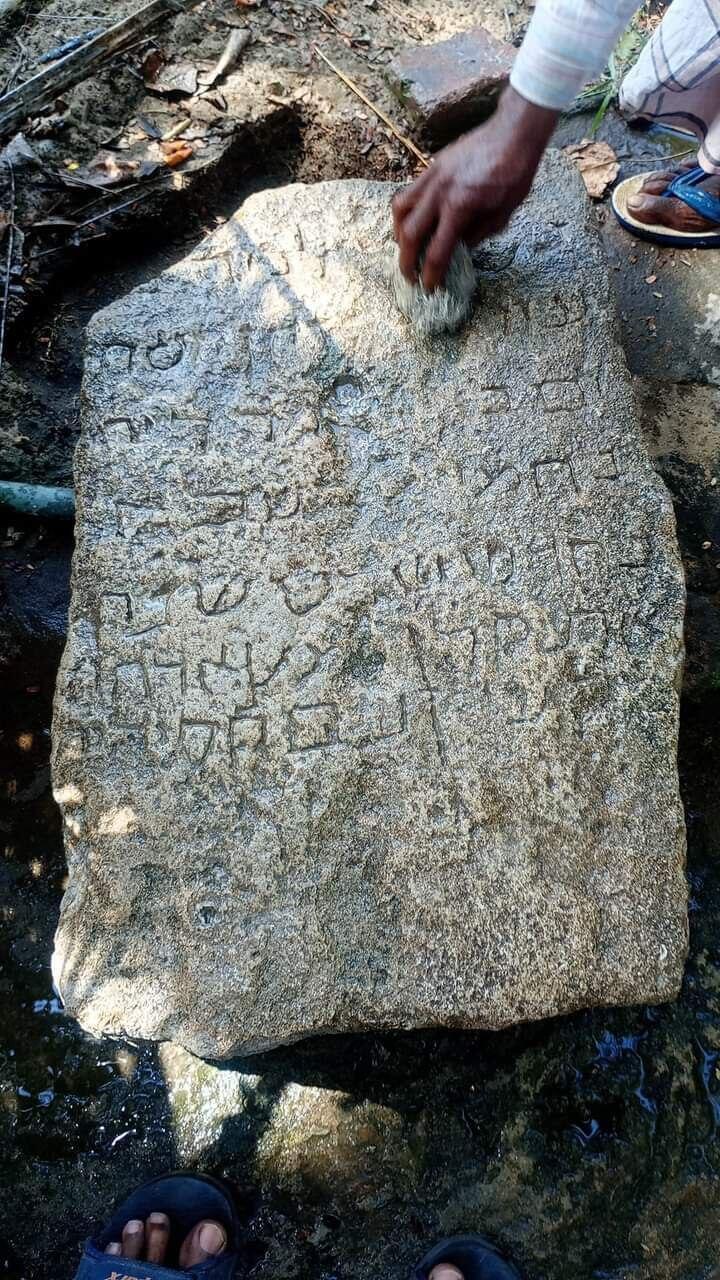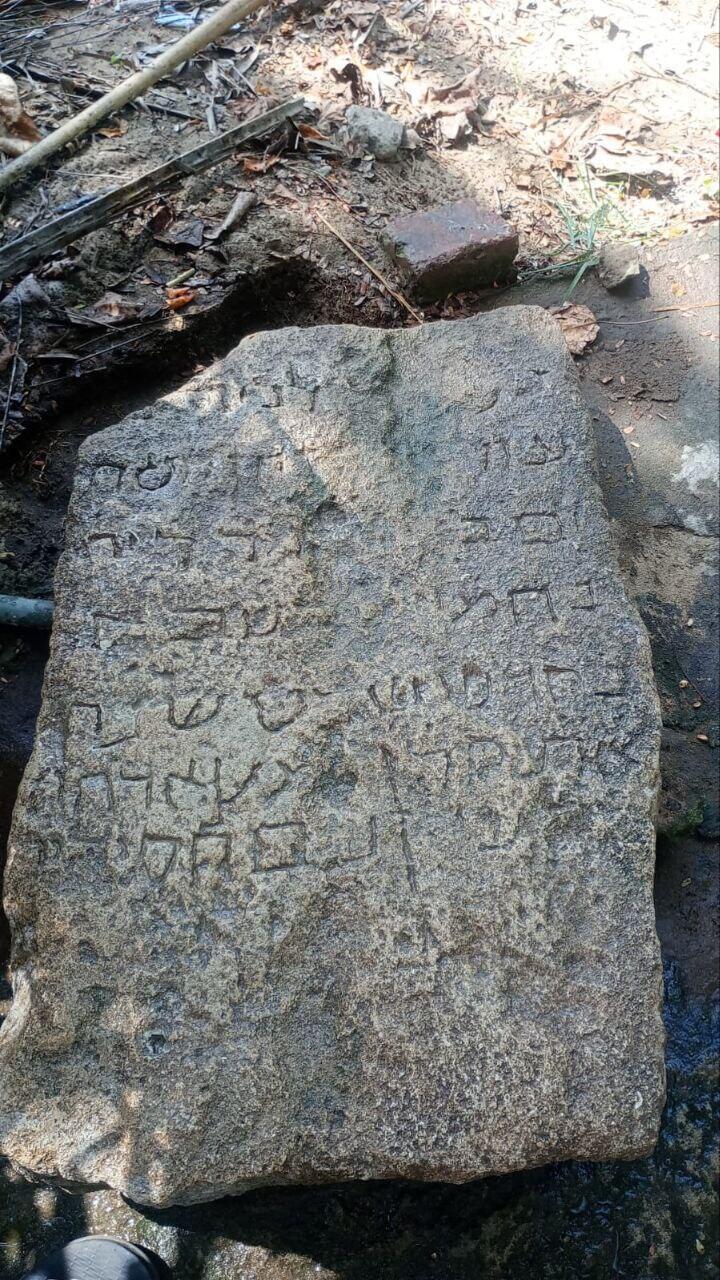Getting your Trinity Audio player ready...
An ancient tombstone with Hebrew inscription was found in India, shedding light on a forgotten Jewish community. The tombstone was discovered in Ramanathapuram, Tamil Nadu, in southern India.
Thoufeek Zakriya, a Jewish history researcher and Hebrew calligrapher, the first to decipher the inscription. He stated that the tombstone dates to 1224 or 1225. "This means that it is older than the Sarah Bat Israel Tombstone in Kerala’s Chennamangalam, which is considered the oldest Hebrew tombstone ever identified in India," Zakriya told the Indian news outlet THE WEEK.
Zakriya, currently residing in Dubai, is an Indian Muslim artist specializing in calligraphy in Hebrew, Arabic, and various Semitic languages. He was born and raised in the historic town of Kozhikode, India, which has a rich Jewish history.
Hathim Ali, 32, a young chemical engineer and history enthusiast from Ramanathapuram, brought the tombstone to public attention. "One of my friends informed me about this tombstone found in the coconut farm owned by Mr. Balu," he said. "When I went to inspect it, I understood that it was neither Tamil nor Arabic. Later, I thought maybe it could be Hebrew." Despite informing the authorities in India, no one came to inspect the tombstone.
Zakriya learned of the discovery through news published in the Indian media by the president of the Ramanathapuram Archaeological Research Foundation. He then contacted Athim Ali, who sent him pictures of the inscription for interpretation.
"The Hebrew inscription bears the date as the 1st of Shvat (Hebrew Month) 1536 or 1537 of the Seleucid era," explained Zakriya. The Seleucid era is the first system of continuous year numbering, introduced in West Asia by the Seleucids. The Jewish adoption of the Seleucid era, known as the Minyan Shetarot, resulted from Hellenistic influence following the conquests of Alexander the Great and the subsequent Seleucid rule over the Jews.
"When converting the dates from the Seleucid era to the common era, it was found that the date on the tombstone inscriptions is approximately equivalent to January 1, 1224 AD, or January 18, 1225 AD," noted Zakriya.
He added that not every line could be deciphered due to damage to the tombstone. "So, I could not find the name of the deceased or his father... But I could see a name partially which could be read as Nehemiah in Hebrew. The initial analysis shows a strong Yemeni Jewish influence in the tombstone's pattern."
Another Jewish tombstone found in the area had inscriptions suggesting it was the tombstone of a Mariam, daughter of David. It is believed that this tombstone is now in the office of the Samsthanam Revenue Officer in Ramnad. "The kind of tragedy is that nobody has actually deciphered its date so far," he said.




